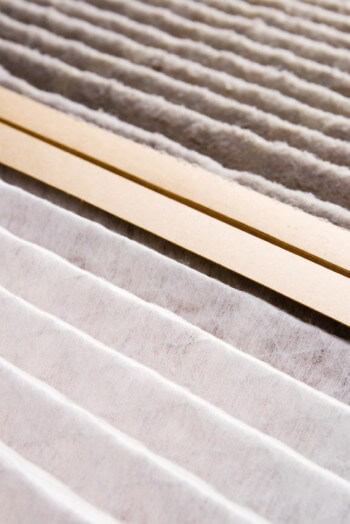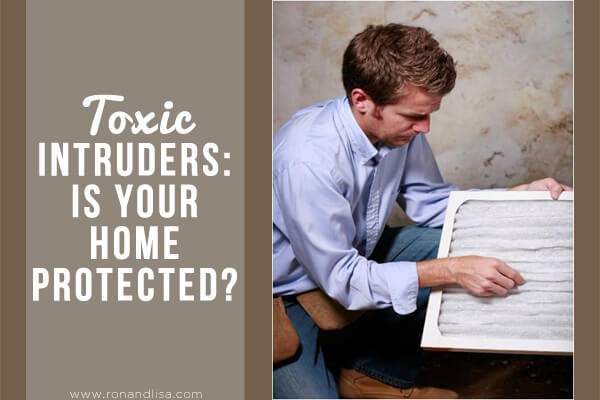What stands 36” tall, 16” wide, fiercely protects my home and doesn’t bark? No, it is not a well trained Doberman Pinscher; it’s my very own obedient and well behaved furnace filter. This one pound, watch dog shields my home from invisible dangers every season of the year and helps maintain a high level of indoor air quality throughout my home. However, not everyone recognizes the value of an HVAC furnace filter. According to national surveys, 41% of American homeowners fail to replace their filters every two to three months, the recommended replacement time, and nine percent have never replaced the filter in their furnace!
Air pollutants fall into two categories – 1.) Gases that come from chemicals and pesticides, and 2.) Particulates like pollen, dust, mold and pet dander (sorry furry little buddy, but it is true). Furnace air filters are a healthy addition to forced hot air heating and cooling systems, and can be effective in helping eliminate particulate indoor pollutants. To be sure your efforts are effective; you need to purchase an air filtration device suited to the contaminants you want to remove. Air purifiers, in combination with a quality furnace filters, can give you the added protection your home needs for better IAQ, or indoor air quality.
The best way to choose a furnace filter is by understanding the efficiency at which it removes airborne particles from the air that passes through it. Furnace filters are measured by the minimum efficiency reporting value called (MERV). The MERV ratings range from 1- 20, with 20 being the best. Airborne particles that pass through the filter are either trapped in the fibers of the filter media itself and or stick to it because of an electrostatic charge.

Pleated furnace filters (with MERV ratings of 5-13) are more efficient in capturing airborne particles than flat styles and some brands can capture at least 90 percent of large airborne particles. The depth of these pleated surface filters commonly varies from approximately 1 to 6 inches (usually 1 or 2 inches). With greater depth and pleats of the filter, there is more area of the filtration medium which in turn, will offset the increase in resistance to airflow across the whole filter. Pleated filters have naturally lower air velocity, have a larger surface area for capturing dust and don’t have as large of a drop in airflow rate as flat filters do.
Please note that there is a very popular brand of pleated furnace filters on the market that utilizes a different performance rating system from the MERV, Minimum Efficiency Reporting Value, rating system. This company developed their own Microparticle Performance Rating (MPR) system to demonstrate the filter’s ability to capture the smallest airborne particles— ranging from 0.3 to 1 micron in size from the air passing through the filter. The higher the MPR, the better the filter’s ability to capture airborne particles that passes through it. When reviewing these types of pleated, electrostatic filters, we recommend you choose a high performance with ratings between 1200-2200.
According to the EPA (the Environmental Protection Agency), filters with a MERV rating between 7 and 13 are likely to be nearly as effective as true HEPA filters! So, head the advice of the EPA and be sure to change your heating/cooling system filter at the start of every season; once every three months. You can in fact teach an old dog new tricks. By forming a new habit and making this a priority, you won’t get stuck in your old ways. In addition, maintaining your furnace filter is an easy and affordable way to breathe cleaner air in your home whilst simultaneously increasing energy efficiency. What’s more? You won’t spend a lot of green since most of these filters can average between $13-20 each and will last a full season. More money saved means more treats for Fido!




This is one easy task that so many of us forget when doing our deep cleaning house rituals. What can be easier than replacing the air filter with a more efficient one and changing it often enough to keep pollutants at bay. Thanks for the needed reminder Ron and Lisa!!
Hello Gene!
Thank you for stopping by and sharing your feedback 🙂 That is a great point…it is easy! I think women in particular get intimidated by this task when in fact, there are no tools required – just a ladder in some cases. We wouldn’ forget to change the oil & air filter in our vehicle and our house is no different. It, too, needs regular maintenance 🙂